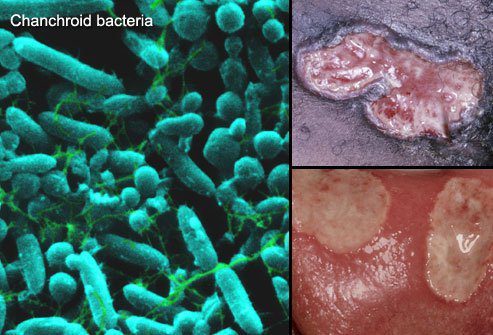Contents
Chancroid: a sexually transmitted disease
Chancroid is a sexually transmitted infection (STI) of bacterial origin. Although rare in France, this sexually transmitted disease (STD) remains widespread in other regions of the world.
What is chancroid?
Also called chancre or Ducrey’s chancre, chancroid is a sexually transmitted disease (STD), or more exactly a sexually transmitted infection (STI).
What is the cause of chancroid?
Chancroid is an STI of bacterial origin. It is due to the bacteria Haemophilus ducreyi, better known as Ducrey’s bacillus. This infectious agent is transmitted during unprotected sexual intercourse, whatever its type, between two partners.
Who is affected by chancroid?
Chancroid is an STD that can affect both sexes. Nevertheless, the consequences of this infection are different between men and women. Chancroid in men is much more painful than in women. It is for this reason that it is more easily and more often diagnosed in men than in women.
In France and Europe, cases of chancroid are rare. This STI is more prevalent in subtropical and tropical countries, including some countries in Africa, South America and Asia.
What is the evolution of chancroid?
The incubation time for this STD is short. It usually lasts between 2 and 5 days but can sometimes extend up to two weeks. As it grows, chancroid causes:
- skin ulceration, characterized by the appearance of various lesions, which may in particular be the cause of paraphimosis, a strangulation of the glans in humans;
- lymphadenopathy, that is, swelling of the lymph nodes, which can lead to an abscess.
What are the symptoms of chancroid?
Chancroid manifests as ulceration of the skin with the appearance of multiple lesions. These can occur at:
- male external genitalia such as the glans, the foreskin or the sheath;
- female internal genitalia such as the vagina;
- of the orifice of the anus.
How to prevent chancroid?
The prevention of chancroid is based on:
- adequate protection during sexual intercourse, in particular by wearing condoms, to limit the risk of contamination;
- good personal hygiene to limit the development of the bacteria Haemophilus ducreyi.
In case of doubt or risky sex, a screening test is recommended. For more information on STD / STI screening, you can get information from:
- a health professional such as a general practitioner, a gynecologist or a midwife;
- a free information, screening and diagnostic center (CeGIDD);
- a family planning and education center (CPEF).
The diagnosis
Chancroid needs to be detected as early as possible to limit the risk of complications and contamination. The diagnosis of chancroid is carried out by bacteriological examination. This makes it possible to distinguish a chancroid from other pathologies. Indeed, there are other diseases that can induce a chancre but their characteristics are different. Chancroid is sometimes confused with primary syphilis, genital herpes, Nicolas-Favre’s disease or donovanosis.
Possible treatments
The treatment of chancroid is mainly based on antibiotic therapy. This consists of killing or limiting the growth of pathogenic bacterial germs. If penicillin is ineffective against the bacteria Haemophilus ducreyi, other antibiotics have been shown to be effective in treating chancroid:
- you cotrimoxazole;
- macrolides;
- fluoroquinolones;
- 3rd generation cephalosporins.
In cases of lymphadenopathy associated with chancroid, surgical drainage may be necessary.











Elimu ya magojwa ya zinaa ni muhimu sana kupata semina ni muhimu Sana kwa vijana. Barehe hivyo nashauri sana serikali iongeze juhudi mashuleni na ndani ya jamii